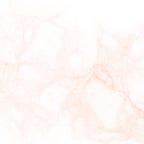Rube Goldberg Machine
Hello everybody!
This is our final project for the module of Engineering Design II, and it is so nice and fun - we are making our own Rube Goldberg machine! { Guest Starring, the Elegoo Tumbller Robot }
Ideas for the Rube Goldberg Machine
Named after an American cartoonist and inventor, the Rube Goldberg machine is an ensemble of chain-reactions, where each distinct action is responsible for triggering the initiation of the next, and so on. The elements of the machine are designed to collectively perform a very simple task, in a complex and entertaining way.
Consistent with the Covid-19 theme, the initial vision was for my Rube Goldberg machine to dispense hand sanitiser onto my palms - but that was lacking the joyful spirit, so I thought of a more cheery and uplifting final task - such as putting some sprinkles on a frosted cupcake ❤
Building the Rube Goldberg!
I decided to decompose the series of actions and reactions into their individual components, test each one out in its entity, and then formulate a plan to join them together.
Part #1 and #2 :
The Elegoo Tumbller Robot initiates all the forthcoming Rube-Goldberg actions with her forwards motion, at a reasonably high speed .
I adapted the Arduino code from the Obstacle Course project - but only wrote a command for indefinite forwards-motion, and deleted all the right / left turns.
The substantial force of her motion pulls forward the connected string, displacing the box attached at the other end - which is acting as a barrier to prevent the orange ball from spontaneously rolling down the slope of the cheese-board. The contact between the ball and the first book creates a domino effect on the books, which proceed to fall systematically, triggering the next component, the bottle of cocoa powder.
Some trial-runs proved that the orange ball was of inadequate mass to generate the required force on the book, so I replaced it with a 330ml can of Heineken, of mass 348g (updated image and pictures below!). It rolls down the sloped 400 mm cheese-board, placed at an angle 30° in 1 second (super quick!), with an acceleration of 3.27 m/s², force of 1.14 N and energy of 0.52 Joules, as calculated below.
Part #3 and #4 :
The force of the falling books trigger the rolling motion of the bottle of Cocoa Powder.
Again, the bottle proved to be of little mass, unable to generate the force required for the consequent action. Therefore, I replaced it with another can of Heineken - it provided an extra 〜 200g (new pictures below!)
The new can of mass 348g (in place of the Cocoa powder bottle), rolling off the edge of the table with g = 9.8 m/s², transferred a force through its attached string, and pulled the card below the purple can, in attempts to destabilise it and displace it forwards - triggering the aeroplane.
The domino-blocks under the purple can proved to be incredibly stable (to my surprise), therefore I used some ping-pong balls and cello-tape to create a ‘wobbly and unstable bed’ for the can to sit on, to be able to be displaced more easily once the force was exerted.
Part #5 :
The forwards-thrust of the purple can provides a gentle push to the aeroplane toy, which is resting on top of the box with the support of its rear wheels.
The 220 mm distance covered in a very quick 1 second gives the aeroplane an acceleration of 2.368 m/s², and force of 0.17 N as calculated below.
The toy aeroplane is of mass 72 g, and upon collision with the shot-glass weighing down a string, the 0.17 N force displaces it, and initiates the final mechanism of the Rube Goldberg machine.
Part #6 :
When the shot-glass stabilising the string is displaced, the bottle of sprinkles is disturbed from its secure position, thereby plunging downwards and generously sprinkling our cupcake.
The mechanism is designed with inspiration from a movable pulley.
The bottle of sprinkles is resting on a frame made from paper straws, and is suspended by a string balanced over the frame. The shot-glass (72g) is capable of grounding the longer end of the string, allowing the bottle of sprinkles (12g) to be appropriately positioned mid-air.
Upon the glass being pushed, the side of the string bearing the sprinkles becomes heavier, and the mechanism is under compulsion to fall to its side - spilling the sprinkles from the bottle !
The Final Video (after learning from mistakes)!
After implementing the design revisions as mentioned above, I was very lucky to get a full run-through while the camera was rolling, yay!
[[ However, I found it hard to devise a good filming-angle, and therefore just decided on a (not very tall) isometric view. The first can was very unstable on top of the slope, so I had my hands ready to catch it, but thankfully we were okay. ]]
And since everything happened so fast and we didn’t get to see much in detail, here are some videos of the mechanisms from when I was trying them out - so that we get to see them a little closer!
Yay We Made It to the End!
The end of a module calls for a little celebration!! I have learnt a lot of Arduino, I have a renewed and very big appreciation for the extent of dedication and persistence required to do even the most trivial bit of engineering handiwork, and I have had so so much fun writing a blog :)
Thank You and Bye Bye
